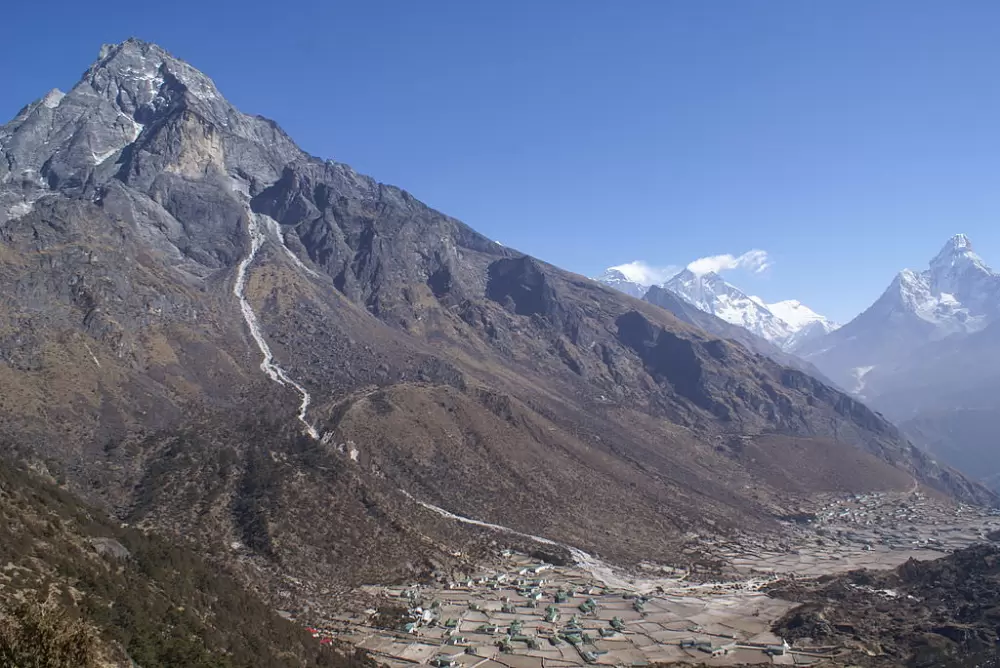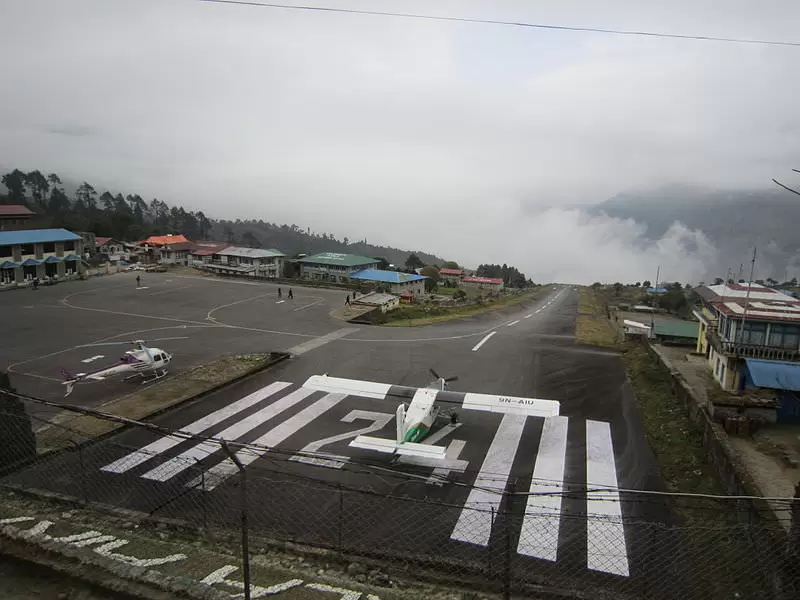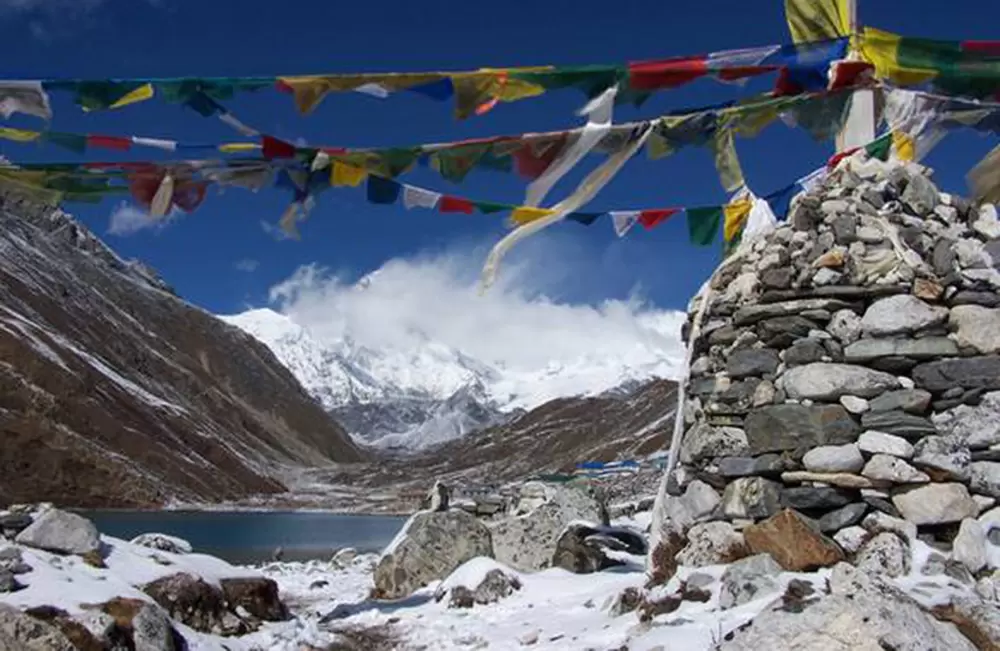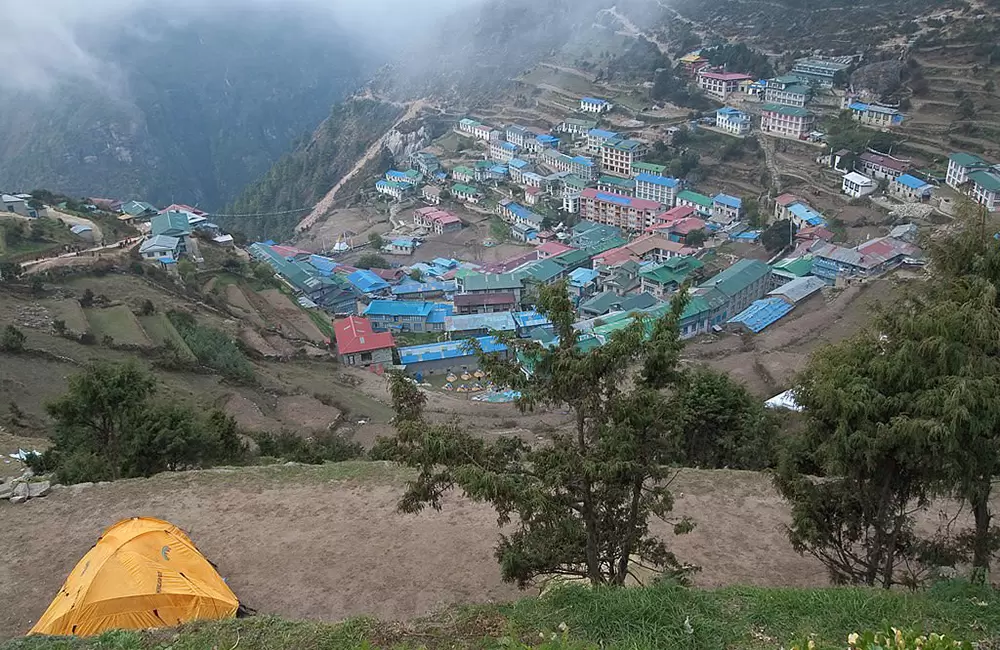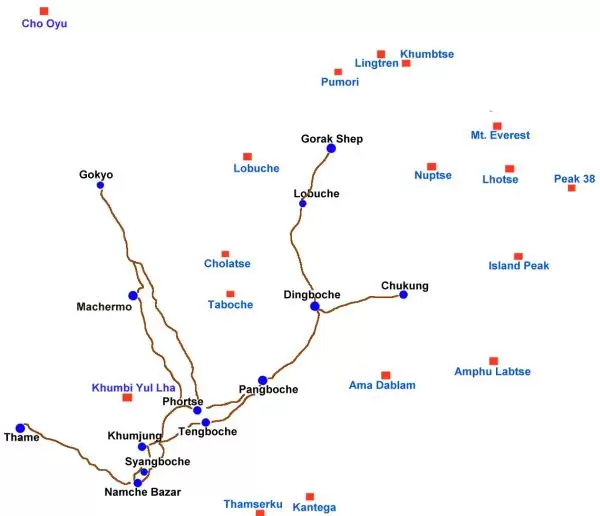Khumbu Travel Guide
The Khumbu's elevation ranges from 3,300 metres (11,000 feet) to the 8,848.86 m (29,032 ft) summit of Mount Everest, the highest place on Earth. The Khumbu region includes both Sagarmatha National Park (above Monju) and the Sagarmatha National Park Buffer Zone, between Lukla and Monju.
The Everest region is officially called Khumbu and includes the Sagarmatha National Park (above Monju) and the Sagarmatha National Park Buffer Zone (between Lukla and Monju). The former is listed as an UNESCO World Heritage site.
Permits and Fees for Khumbu Region
TIMS (Trekking Information Management System) permits are required to venture forth for any trek, also for the Khumbu region, they are easy to obtain in Kathmandu at Nepal Tourism Board against US$30, a recent passport size photo and filling in the required form before you embark to your trek. If you are with an organised trekking party your tour operator will do this for you.
Also a National Park Entry Fee is required and can be obtained either in Kathmandu or while entering the Park.
Best time to visit Khumbu Region
The best time to visit Khumbu Valley is from March to May and late September to late November. The peak period is October and November, when weather is usually stable and visibility excellent.
The journey from India to Khumbu is an adventure in itself, offering a mix of air travel, scenic drives, and trekking through some of the world’s most stunning landscapes.
Activities in Khumbu
Trekking in Khumbu Valley
There are numerous hiking and trekking routes in Khumbhu Region apart from Mount Everest and other peak expeditions. Khumba Valley hikes can take anywhere from two weeks to a month depending on the route taken.
Trekking in Khumbu Region is difficult and demanding in that many days will be spent at high altitude. Its isolation makes medical assistance hard to obtain and turning back in bad weather is nigh-on impossible. Exceptional walking experience and physical fitness are required.
Some trekking routes are:
- Hike to Everest base camp
- The circular route to EBC via Gokyo Lakes
- Three passes hike to EBC
- EBC hike including Island Peak
Shopping - Outside Namche, there are few souvenir shops which sells locally made handicrafts and some unique items which comes from Tibet region. Also, check out the clothing made from yak wool. This is often made locally, and so the prices may be lower than in Kathmandu.
Khumbu Travel Tips
- Altitude sickness affects even young and healthy people and is a genuine problem in Khumbu. If you feel dizzy, suffer palpitations or a severe headache, return immediately to lower altitude.
- Yaks may be photogenic, but they are aggressive and unpredictable. Always stand on the upper slope to let yaks pass.
- Don't drink the water no matter how pristine it appears. Use iodine tablets as a purifier or purchase boiled water.
- There is an emergency rescue centre in Namgyal lodge in the village of Machermo in the Gokyo Valley manned by two volunteer doctors. Note: This is purely an emergency rescue centre, and the doctors will not treat common ailments.
- Permits: Obtain the Sagarmatha National Park Entry Permit and TIMS (Trekkers' Information Management System) Card.
- Acclimatization: Essential due to the high altitudes in the Khumbu region.
Staying in Khumbu
Accommodation is in an abundance in Khumbu, and ranges from the luxurious Everest View Hotel near Khumjung to the very comfortable lodges in Namche down to those offering very basic facilities. Generally, the higher the altitude, the simpler the accommodation.
Lodges and restaurants in Khumbu only accept Nepalese rupees. Budget can vary hugely between Rs 1,500-2,000 per person per day for food and accommodation - prices rise with the altitude, though you may spend more in Namche because there is more on offer.
Khumbu Food Guide
Most lodges offer similar menus - porridge, hash browns, omelettes, dal bhat, spaghetti, fried rice, apple pie, etc. - although those in Namche tend to have a wider selection, which includes such things as pizza and juice.
Bakeries, which began as a Namche phenomena, now also operate in Khumjung and Tengboche, offer such luxuries as freshly baked pizza, German breads, pastries and even cappuccino. Local dishes you can try are Riki-Kur and Tzen.
Tea, instant coffee and a drink made from lemon concentrate are the cheapest beverages in the region, and are available in every lodge or tea shop for Rs 50 to 150 a cup.
History of Khumbu
Tenzing Norgay was also born Namgyal Wangdi (Khumbu Region), also referred to as Sherpa Tenzing, was a Nepali-Indian Sherpa mountaineer. He was one of the first two people known to certainly reach the summit of Mount Everest, which he accomplished with Edmund Hillary on 29 May 1953.
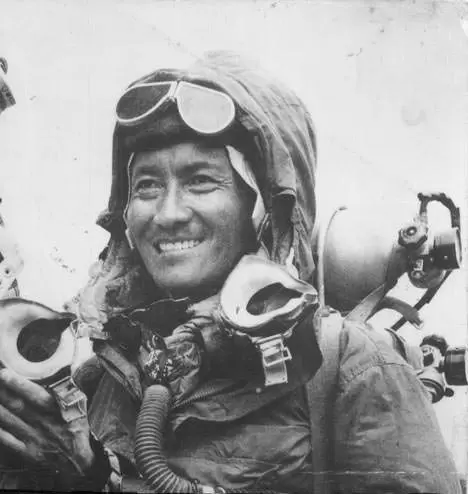
Wikipedia - Tenzing Norgay in 1953
Villages in the Khumbu region
Following are some of the popular villages in Kumbhu Region.
- Gokyo – a village at 4790 m, which forms the centre of the Gokyo trail.
- Ghat – a small beautiful village in-between the Lukla–Phakding trail of the Everest Region
- Khumjung – good place to take an acclimatization walk when staying in Namche; sacred cave
- Khunde (Kunde}) – near Khumjung, location of Khumbu's main Western medicine clinic
- Lukla (Lukhla) – location of an airport
- Monju (Monjo) – good place to stop on first night after arriving at Lukla
- Namche Bazaar – the unofficial Sherpa capital - restaurants, cafes, museums, Tibetan medical clinic
- Pangboche – picturesque village - small monastery
- Phortse – very traditional village on mountain opposite Tengboche
- Tengboche – large monastery
- Chhukhung – support village for the trekking to Island Peak or day trip to Chhukhung Ri
- Dingboche – relatively large village above the treeline
Other villages are Lobuche, Thame, Thamo, Phakding
Sherpa Clans in Khumbu Region are Salakha, Murminso, Thaktok, Garza, Lhakshindo, Chusherwa or Ngonba , Luakpa or Chawa, Sakhya, Shyango. Sherpas speak their own language called Sherpa, which is related to Tibetan. Most Sherpas under the age of fifty can also speak English and Nepali.
Khumbu Glacier
The Khumbu Glacier is located in the Khumbu region of northeastern Nepal between Mount Everest and the Lhotse-Nuptse ridge. With elevations of 4,900 m (16,100 ft) at its terminus to 7,600 m (24,900 ft) at its source, it is the world's highest glacier. The Khumbu Glacier is followed for the final part of the trail to one of the Everest Base Camps.
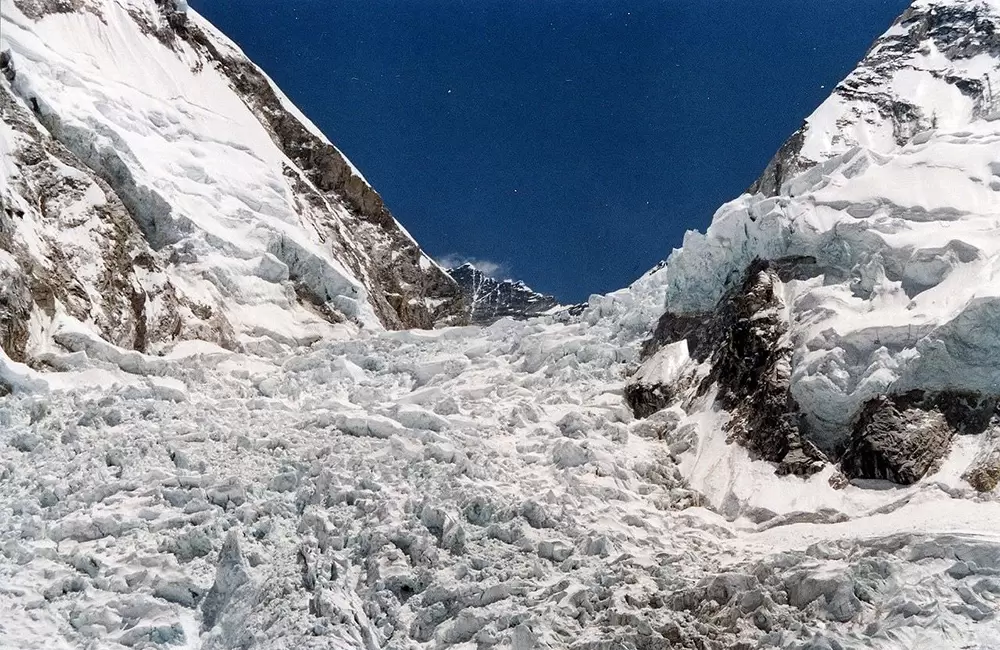
Wikipedia - Khumbu Icefall from Glacier
The glacier has a large icefall, the Khumbu Icefall, at the west end of the lower Western Cwm. This icefall is the first major obstacle—and among the more dangerous—on the standard south col route to the Everest summit. It is also the largest glacier in Nepal.
Tourist Map of Khumbu
Map for representation purpose only - not to scale.
Ask a Question about Khumbu
What is Khumbu famous for?
Khumbu is famous among tourist as Mount Everest, Trekking, Mountaineering, Villages, Sherpa Clans, Glacier, Snow Treks, Expeditions.
Khumbu is popular destination for following activities/ interests - Base Camps (Trek), Trekking.
Write a review about Khumbu
